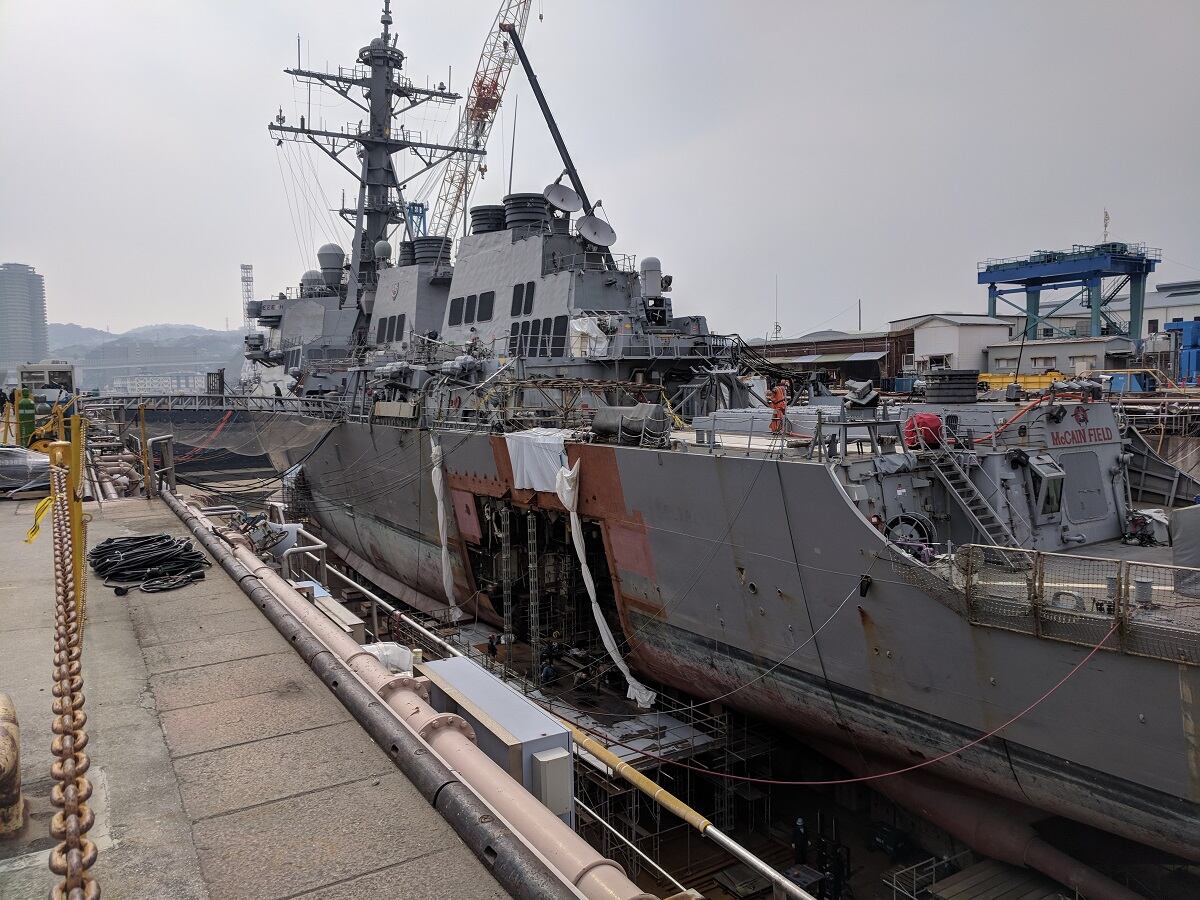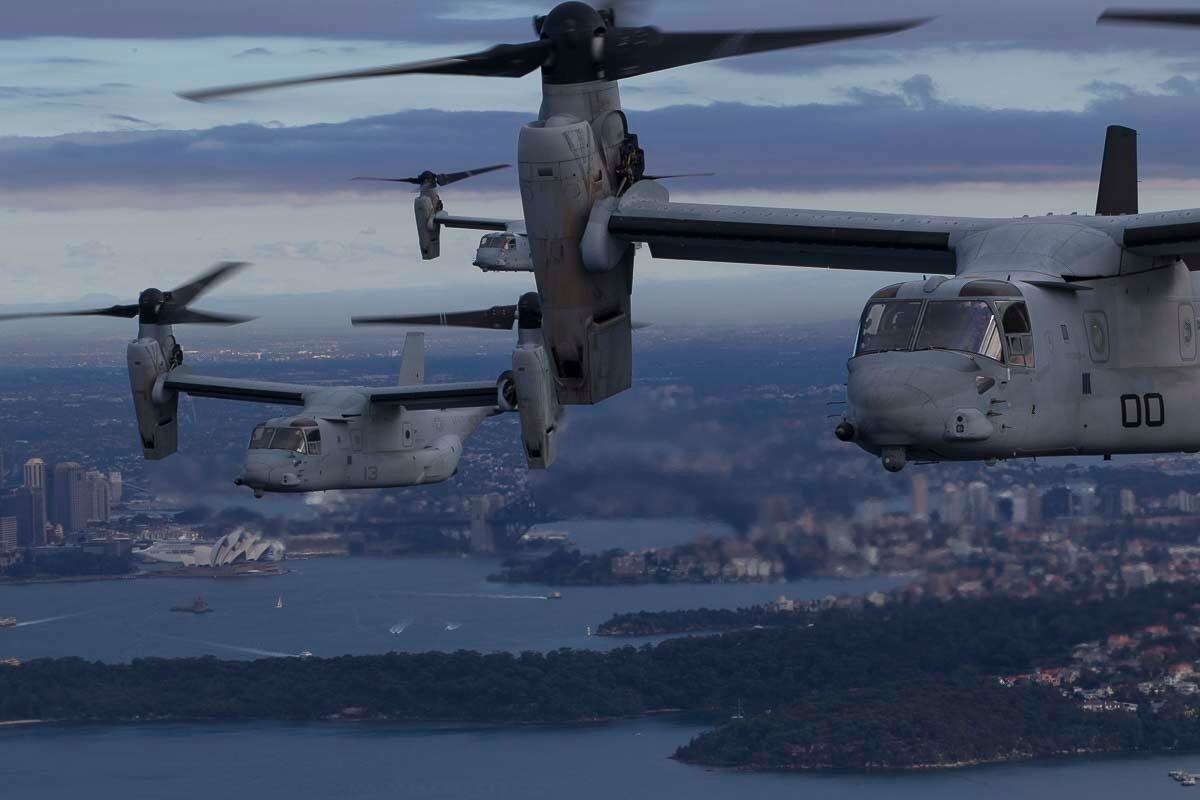Cross domain integration isn’t “a bunch of gobbledygook,” according to Rear Adm. Ronald Boxall, the Navy’s director of Surface Warfare. In fact, it should save money, Navy leaders argued during a panel at the Sea-Air-Space Exposition Tuesday.
Boxall first spoke about the push for cross domain integration within the sea service during a panel at the Navy Association’s annual symposium in January.
“After that, I read some of the blogs like you shouldn’t do — but I did anyway — and it said things like ‘it’s a bunch of gobbledygook,’” he said Tuesday.
But there are genuine moves being made towards blending assets within the Navy’s separate missions that will be critical in this new threat environment, according to Boxall.
“When I came into surface warfare, my job was to make ships as good as they possibly could be with the money you have,” he said. “That was really what we drove to do.”
Over time, though, “we realized it’s not about us at surface warfare, it’s about the entire Navy and how we bring our forces to bear,” he added.
“Fast forward a few years,” Boxall said. “I look and say ‘how is it we’re using surface ships to maximize the capabilities of our force,’ and conversely, ‘what is it that I need submarines, aircraft, and the network to do to improve what I can do with my ships?’ … That’s what’s different.”
RELATED

The sentiment was echoed by Rear Adm. John Tammen, director of the Undersea Warfare Division at the Office of the Chief of Naval Operations. The cross domain influence in defense industry proposals can be seen coming through these days, Tammen said.
“You see UAVs (unmanned aerial vehicles) that do mine-hunting, UAVs that provide targeting, and then the flip side of that is systems that counter those small UAVs,” Tammen said.

The host of unmanned systems coming out act as a “gap closure” on tasks that traditional, manned vessels don’t have ability to do, Tammen said.
“Being a submariner from the early ’80s — back when we looked at anti-submarine warfare (ASW) as a very submarine thing — we were very proud of our ability to do ASW,” he said. “Well, things have changed.”
“The submarines our adversaries possess are exceedingly quiet and exceedingly harder to track,” Tammen added. “So, it has really put a fine point on just how much cross domain integration there needs to be for ASW.”
Tammen pointed to the work of the P-8 Poseidons and P-3 Orions as testaments to ASWs growing reliance on naval aviation, as well as the continuous sonar surface ships provide in theaters of operation.
RELATED

And the cross domain push isn’t just good for the Navy; it’s a boon to the taxpayer as well.
Secretary of Defense Jim Mattis cautioned the military to be good “stewards of the taxpayers’ dollars,” Tammen recalled.
“What we get with cross domain integration is not being duplicative on capabilities,” he said. “We really don’t have the topline to go after the same capability with all platforms … Why buy systems that aren’t interoperable across the force? And not just our force, but between our allies as well.”
Perhaps the most obvious point of cross domain integration lies with the Marine Corps, which deals specifically with littoral operations.

That is the area where “water meets land and all the domains come together,” said Marine Maj. Gen. David Coffman, deputy commanding general of I Marine Expeditionary Force. “In my view, this is where the issue is decided in warfighting. Movement from my land to their land ... that’s an expeditionary campaign.“
“We are at a strategic inflection point as a nation,” Coffman said. ”We think we can exploit this period of change. … it’s time for next-generation expeditionary warfare.”
RELATED

Part of that exploitation lies in revitalizing naval maneuver warfare, Coffman said. And that can only be done through “sea control and power projection.”
That revitalization is underscored by the Corps’ largest redistribution of forces since World War II, as thousands of Marines are being shifted around the Pacific to prevent rising threats like Russia, China and North Korea from being able to concentrate attacks against Marine units.
“Our nation’s naval and expeditionary forces are, dare we say, unique,” Coffman said. “Nobody else on the planet can do what we do in the littoral battlespace.”
Kyle Rempfer was an editor and reporter who has covered combat operations, criminal cases, foreign military assistance and training accidents. Before entering journalism, Kyle served in U.S. Air Force Special Tactics and deployed in 2014 to Paktika Province, Afghanistan, and Baghdad, Iraq.








